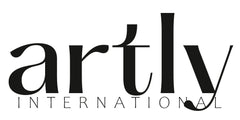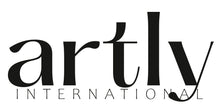William Quigley: Artistic Brilliance and Master of the Art Market
In the realm of contemporary art, there exists a select group of individuals who have emerged as leaders of creative innovation, leaving an indelible imprint on both the art world and broader culture. Among these luminaries stands William Quigley, a figure with a remarkable ability to distinguish himself, influence cultural trends, and excel across multiple artistic disciplines, all while pursuing humanitarian and philanthropic endeavors.
Quigley's unique adaptability allows him to tailor his artistic vision to diverse contexts while intentionally crafting his distinctive brand. His work displays a remarkable level of technical skill, as well as a profound understanding of the artistic process. This synergy of artistic talent and business acumen has given rise to a body of work and a brand that radiates enduring significance.
A journey into Quigley's practice reveals the eclectic influences that inform his art. Blending Abstract Expressionism and Portraiture elements, his pieces embody an interplay between diverse artistic traditions. His subjects, often iconic figures, and cultural luminaries, exude immediacy and intimacy, capturing the essence of their personas.
William Quigley, born in 1961, has earned the title of a "cultural catalyst" as one of the most influential contemporary artists of our era. His global art presence, unwavering dedication to the arts, and philanthropic pursuits culminated in his recognition as VH1's "Visual Artist of the Year" in 2007.

Quigley's career launched over three decades ago when Henry McNeil, owner of the McNeil Gallery in Philadelphia, sold three of Quigley's paintings in an exhibit alongside one of Warhol's final shows, "Images of a Child's World," in 1985. Through McNeil Gallery, Quigley began showing in the downtown New York 80's clubs and group shows with artists such as Basquiat, Robert Longo, Haring, Debbie Harry, Julian Schnabel, and Christof Kohlhofer. During this time, Quigley honed his skills amidst New York City's vibrant street art scene, which laid the foundation for his unique style.
Quigley then moved to New York to attend Colombia University’s MFA Program, setting up a studio in SoHo while continuing to show with McNeil and downtown NY spaces. During his early career, Quigley studied under artists and historians such as Lee Krasner, Alice Neel, Milos Forman, Laurie Anderson, Louise Fishman, Frank Auerbach, Walter Darby Bannard, Annette Insdorf, John Yau, and Clement Greenberg among others. Each mentor opened his mind to critical thinking fortified in a strong art historical context. While in school, he showed an interest in cartoons, then figurative painting mixed with abstraction.
In 1989, Quigley began showing his work through Manny Silverman Gallery in LA, alongside distinguished artists like Willem de Kooning and Rauschenberg. He concurrently worked in set design for commercials as well as music videos for pop icons Madonna, Prince, and OutKast among others.
In 1994, Quigley established AB Gallery in Los Angeles, which was directed by Dan Bernier. Quigley's art went on to be showcased in some of the most respected galleries, and museums worldwide. These include Germany's Arne Zimmermann Gallery, Art Basel in Switzerland and Miami, and Scope Chicago. Notably, he became the first American artist to exhibit at the Miro Foundation in Mallorca, Spain.

His return to New York in 1999 saw a renaissance of abstraction, rich in the art history of Art Pobre, Street work, Kienholz, Dadaists, and Abstract Expressionists, combining everyday objects blended with the sentiments of Pollock, Bacon, Twombly or Clement Greenberg. During this time, Quigley began a collaboration with musician Pete Francis which led to unique art-music amalgamations, and the founding of Skrapper. The term Skrapper is a fusion of "scraps" and "rapper," indicating a combination of various elements and mediums. Through Skrapper, Quigley engaged in art-music ventures and innovative collaborations, resulting in unique projects that blended artistic expression with music and marketing. From 1999-2005 he made some of his most personally significant paintings, with his unique Skrapper approach to art and marketing.
Most of the success surrounding his work has come from the ambitious, unconventional avenues that have led to amassing over 600 collectors, many of whom can be found in ARTNews’s list of the “World’s Top 200 Collectors”. Quigley is one of the most commissioned artists of our time. He has painted portraits of Presidents Bush and Clinton, Arnold Schwarzeneggar, Audrey Hepburn, Michael Jordan, LeBron James, Robert Downey Jr., Chris Evans, Muhammad Ali, Bruce Springsteen, Tom Brady, Kobe Bryant, and many others.
William Quigley’s ability to capture the zeitgeist of our time and reflect it back to us through his art in a way that resonates with contemporary culture is a testament to his awareness of societal currents which shape our collective consciousness. Quigley has managed to establish and maintain a profound connection with his audience, provoking thought, and inspiring dialogue. He currently resides and works in East Hampton, NY and NYC, NY. He is represented by Julie Keyes Fine Art, AB NY Gallery, and Karl Hutter Fine Art.





发表评论